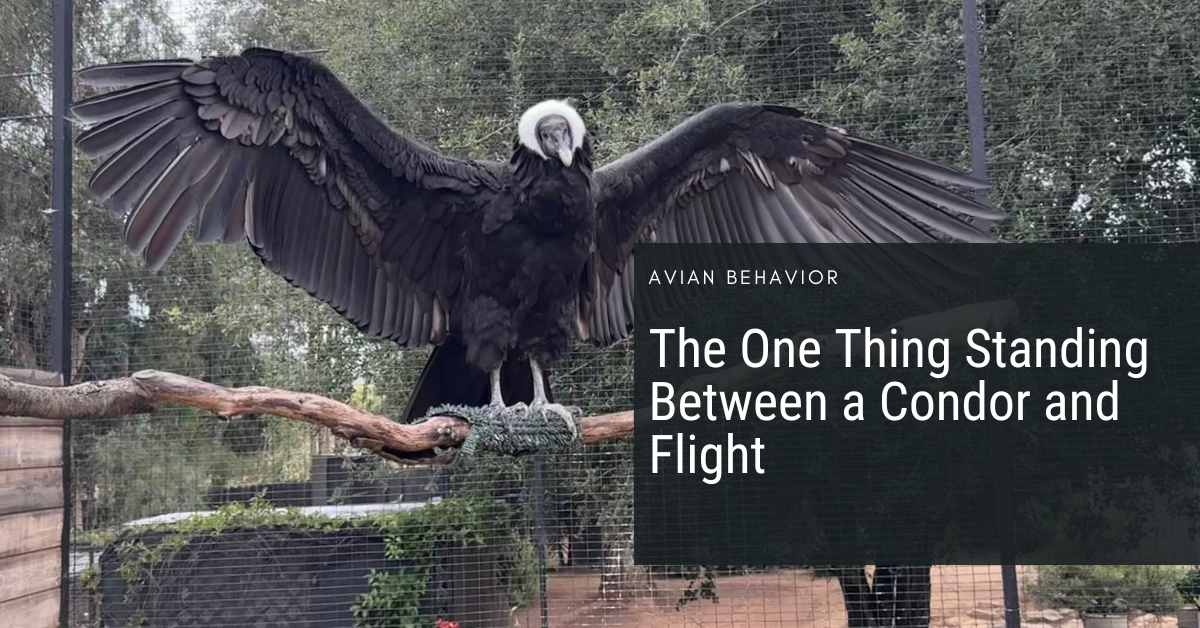
14 Aug The One Thing Standing Between a Condor and Flight
On a warm afternoon, Suyana, our Andean condor, was set for her final flight of the day. She stepped out onto the grass, clearly interested in heading to her sending-off trainer. But between her and the launch point? A lot of plants. And an uphill climb.
You could almost see her weighing her options. After a pause, she turned back toward me. When I offered her the granite slab instead, she stepped up, took a few deliberate strides, and launched into the air with ease.
For a bird this size — the largest flying bird in the world, depending on how you measure it — that running start isn’t just preference. It’s anatomy.
Condors have enormous wingspans and relatively high wing loading compared to other vultures. Their bones are pneumatic — lightweight and air-filled — but still built to support an impressive amount of muscle. Getting all that airborne requires speed and lift, which is why they often launch from high perches or flat, open runways like that granite slab.
When we talk about “motivation” in training, it’s tempting to think only in terms of food, reinforcement history, or the bird’s mood. But understanding the structural adaptations that evolved for flight — from fused clavicles to keeled sternums — changes how we set them up for success. Anatomy isn’t just background information; it’s a key part of the training plan.
These concepts are visible in the way that we train and exhibit our birds. Each one is able to fly in a way that suits the way they evolved to fly. Owls are ambush predators: they sit and wait for their prey to come with in range of them to glide down on it. This is why they have cryptic – or camouflaged – feathering and extraordinary hearing and vision. When we fly them for our falconry classes, sometimes we are the ones sitting… and waiting…. and admiring them on our gloves. No complaints here! Falcons are quite different. They have powerful flight muscles and pointed wings for snappy flights and diving at birds on the wing. They can make sharp mid air turns and stoop like a dart at hundreds of miles per hour.
The bird wing is specifically designed for flight in a highly technical way to enable flight. It’s hard to appreciated this evolution until you look under the hood of millions of years of adaptation. That’s why in our Bird Biology course, we dedicate a whole lesson to bird bones — how they’re built, how they work, and how those details influence behavior, flight style, and training.
If you’ve ever wanted to understand why a bird moves the way it does — and how to use that knowledge in the field — this lesson will change the way you see every wingbeat.

